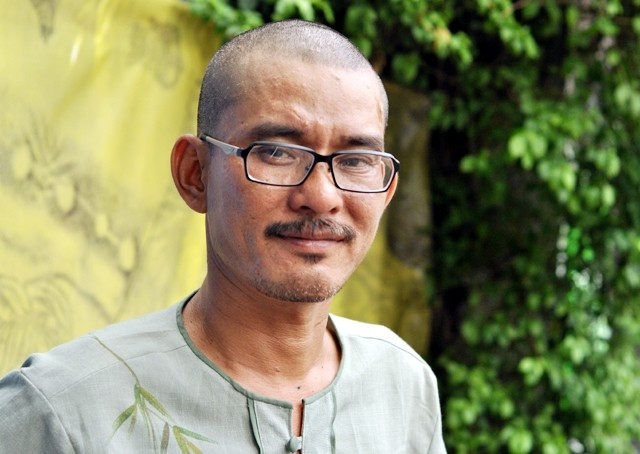Phan Hai Bang granted an interview to Nhan Dan Weekend newspaper to talk about this new art form he founded with his partners.
Q: Can you talk about the origins of Truc chi art?
A: As a painter and lecture on graphic arts, I am interested in paper as an art material. Since 2000, I have researched paper, and in 2007 I had a chance to experience the paper craft in Dong Cao, Bac Ninh province and Chiang Mai, Thailand through a scholarship of the Asian Scholarship Foundation. When I understood paper’s concept and essence, I wanted to make a type of paper based on traditional Vietnamese papermaking techniques. I experimented with some works and in April, 2012, the Truc chi art project was official started from the idea of writer and translator Buu Y. The Truc chi art’s spirit is creativeness and building new value on a traditional background.
Q: How did Truc chi form in your mind ?
A: Truc chi started from handmade paper. After our research and experiments, the handmade paper’s values were rebuilt to change some concepts.
Firstly, the paper is only material or background for other creative pursuits, such as writing, painting or printing. Truc chi is also a kind of paper, but it has its own spirit and it is beyond the familiar for those who get chance to use it in an art work.
In detaching the concept of paper, many experiments were implemented with raw materials such as straw, bamboo, sugar-cane, banana, pineapple, mulberry, water-fern and leaf. Among of the raw material, bamboo is popular. It has a fibre characteristic, which meets creative needs. For this reason, we selected bamboo as the major raw material for our project.
Additionally, Bamboo is a cultural symbol for Vietnamese people. It has a strong connection to the spiritual life of the people, and sometimes symbolizes Vietnamese people.
Q: What was most difficult when you began Truc chi?
A: Our largest difficultly was a lot of people’s lack of response. They weren’t interested in Truc chi compared to people in other countries. Many people thought that Truc chi was only the paper.
In additional, we met other difficulties such as material facilities, finance and human resources challenges.
Q: You and your partners opened a Truc chi art company. It is said that all difficulties are only temporary. Is Truc chi feasible as a business?
A: We receive support from domestic and international agencies and organisations, as well as individuals. They help us in shaping Truc chi’s concept.
The company aims to settle difficulties in finances to develop our project. Earlier, the biggest expenditure was from my salary at the Hue University of Art. However, as a company, we can borrow money from banks and funds. With a company, we can develop and affirm new values.
Truc chi can serves as material for various art, decoration and installation works. One can find handbags, lanterns, gift boxes and umbrellas made from brightly coloured Truc chi.
Additionally, Truc chi has also been featured in many exhibitions in Hue, Hanoi, Ho Chi Minh City, Thailand, Laos and Japan.
All are considered positive signs for Truc chi art.
Thank you very much!

| The production of bamboo paper has a long tradition in some Asian countries, but the process is usually completed with the moulding of the paper. This is just the beginning for Trucchigraphy. Artists interact with the wet structure of the paper on the frame and use water pressure and other techniques to change the surface. In this way, unique images are created, which some artists further process through brush or collage techniques. Artworks on Truc chi are being introduced for the first time at the exhibition ‘Truc chi - Listen to the River’, at the Goethe Institute, 56-58 Nguyen Thai Hoc Street, Hanoi, from July 1-15. |
















